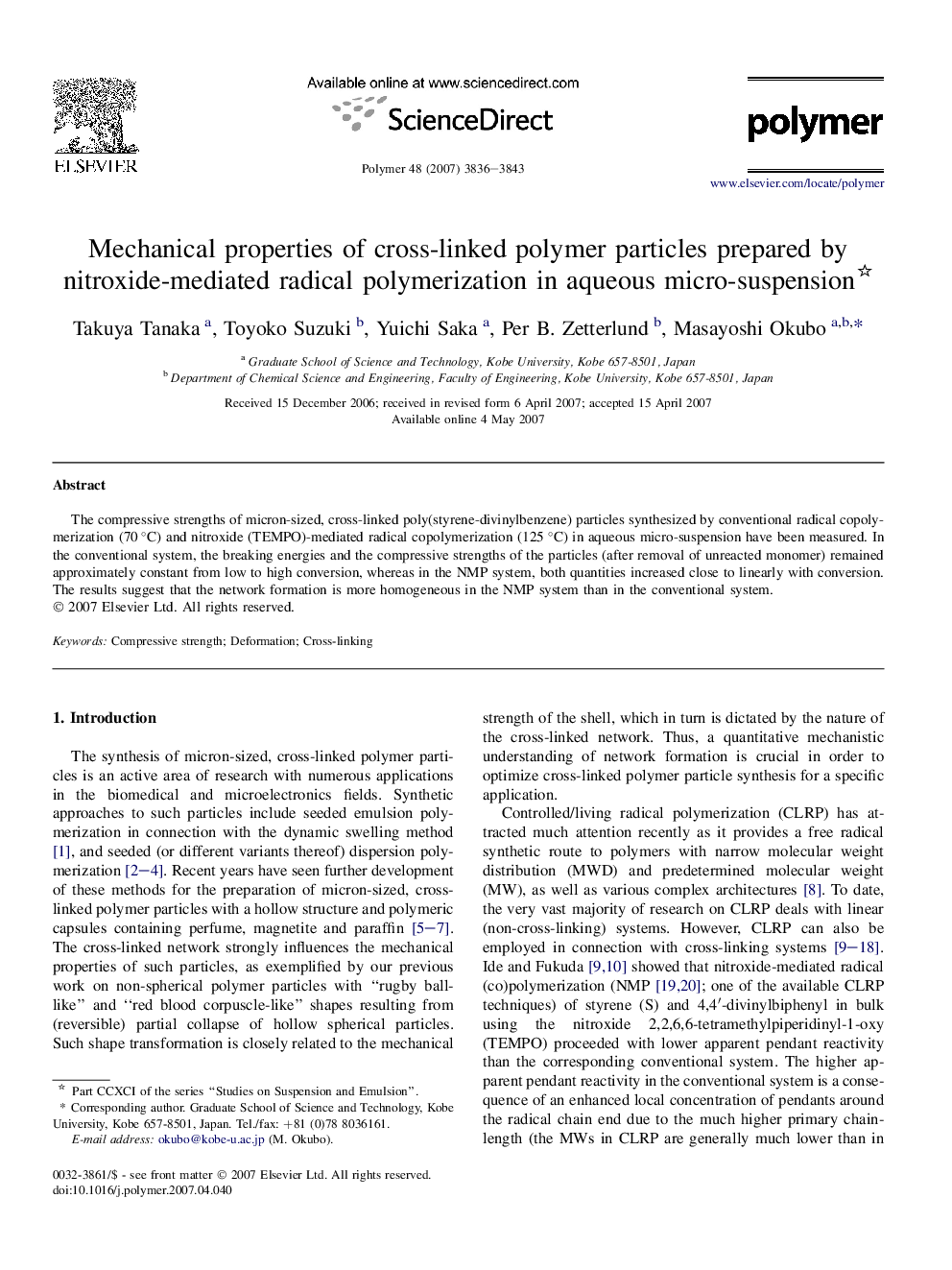| Article ID | Journal | Published Year | Pages | File Type |
|---|---|---|---|---|
| 5185952 | Polymer | 2007 | 8 Pages |
Abstract
The compressive strengths of micron-sized, cross-linked poly(styrene-divinylbenzene) particles synthesized by conventional radical copolymerization (70 °C) and nitroxide (TEMPO)-mediated radical copolymerization (125 °C) in aqueous micro-suspension have been measured. In the conventional system, the breaking energies and the compressive strengths of the particles (after removal of unreacted monomer) remained approximately constant from low to high conversion, whereas in the NMP system, both quantities increased close to linearly with conversion. The results suggest that the network formation is more homogeneous in the NMP system than in the conventional system.
Related Topics
Physical Sciences and Engineering
Chemistry
Organic Chemistry
Authors
Takuya Tanaka, Toyoko Suzuki, Yuichi Saka, Per B. Zetterlund, Masayoshi Okubo,
